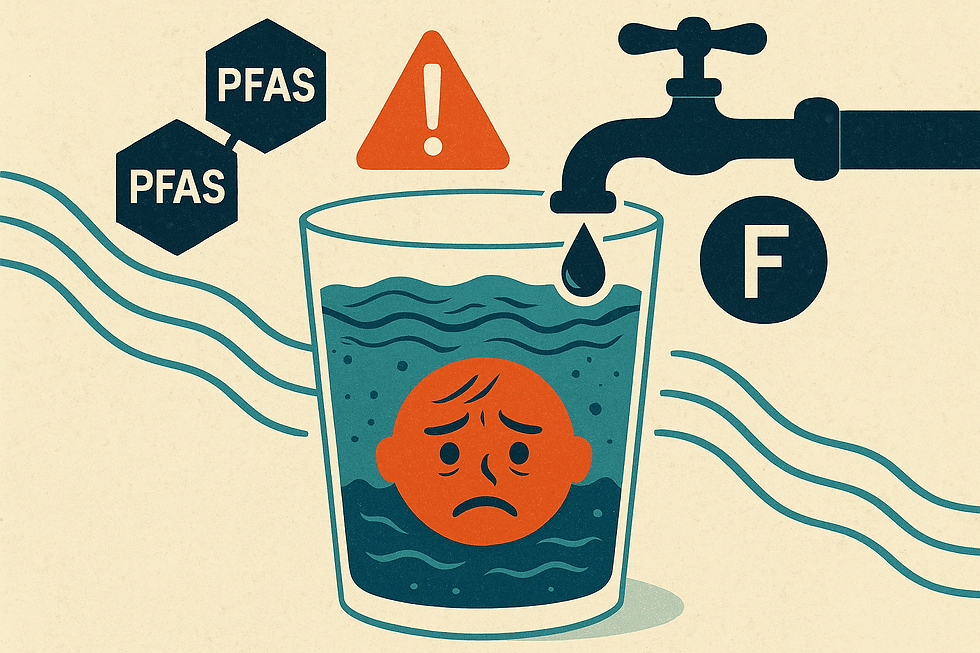Troubled Waters: What You Need to Know About PFAS & Fluoride in Drinking Water
- Everfilt® Admin

- Sep 24
- 2 min read

Let’s be honest, most of us don’t think twice when we fill up a glass of tap water. It’s supposed to be safe, right? But the truth is, there’s a growing buzz about what’s really in our water, and two big players are grabbing headlines right now: PFAS (aka "forever chemicals") and fluoride. Both are sparking heated conversations, and it’s worth knowing why.
PFAS: The Forever Chemicals You Didn’t Ask For
PFAS (per- and polyfluoroalkyl substances) are synthetic chemicals that were supposed to make life easier, think nonstick pans, stain-resistant carpets, and waterproof jackets. But here’s the kicker: they don’t break down in nature, or in our bodies, which is why they’re called forever chemicals. Now, they’re showing up in water supplies everywhere, and research links them to serious health concerns like cancer, hormone disruption, and weakened immune systems.
Why Everyone’s Talking About It
Stricter Rules: The EPA recently set tough new limits on PFAS in drinking water.
Corporate Accountability: Big companies are facing lawsuits for letting these chemicals seep into communities.
Grassroots Action: Neighborhood groups are testing the water, demanding transparency, and holding officials accountable.
Fluoride: A Debate That’s Back in the Spotlight
Fluoride in drinking water isn’t new; it’s been around since the 1940s as a way to fight cavities. But now, people are asking whether mass fluoridation still makes sense. With fluoride toothpaste and better dental care widely available, is adding it to tap water outdated? Some communities are reconsidering, weighing the benefits against potential risks like overexposure.
Why It’s Trending Again
What You Can Do
Check Your Water Report: Utilities post this info online; it’s free and eye-opening.
Use the Right Filter: Not every filter removes PFAS or fluoride. Do a little research before you buy.
Speak Up: Whether it’s at a city meeting or through local advocacy groups, your voice can influence policy.
Clean water should be simple. But as PFAS and fluoride debates heat up, it’s clear that what flows from our taps is more complicated than it looks. Staying informed and engaged is the best way to protect your health and push for the safe, transparent water systems we all deserve.



